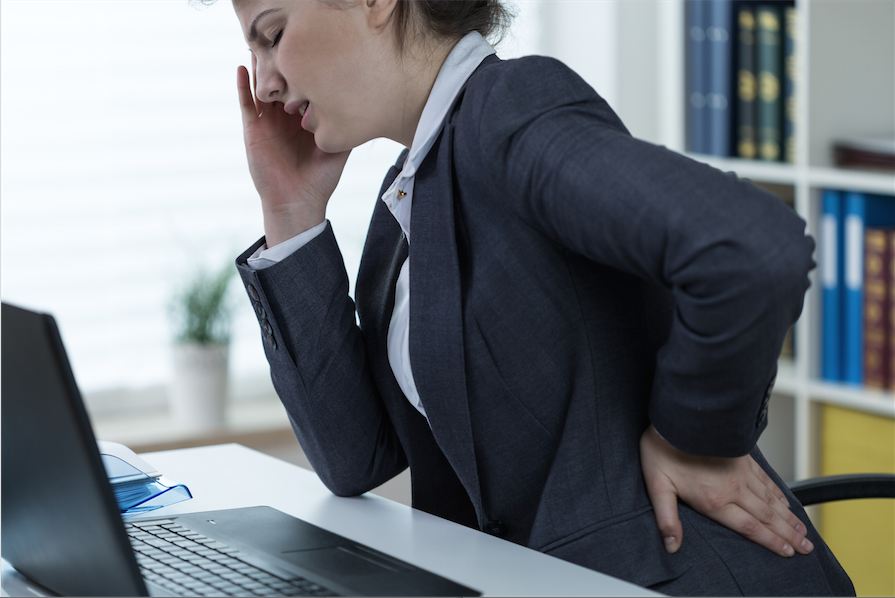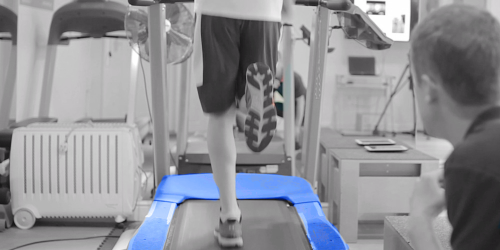Your back, spine and neck muscles are some of the most complex, and crucial muscles in your body.
It shouldn’t be a surprise then that lower back pain which you may as associate with ‘sciatica’ is one of the most common complaints. Lower back pain can be caused by a very wide range of minor to severe injuries to any one of the various components of your back.
Sometimes the cause can be as minor as inflammation caused by the ‘rubbing’ of overused joints, easily treatable through rest and gentle exercise.
But at other times it can be a symptom of a much more severe or chronic issue, which will not heal without professional support.
Here are some of the most common lower back injuries you can sustain:
Back Strain
Back strain, which is one of the most common injuries, is usually caused by extreme physical exertion, improper posture, and even emotional stress.
Usually it is no more severe than a feeling of tightness, or stiffness in the lower back.
The good news is that more often than not, a back strain is easily remedied with proper rest and gentle exercise.
However, it is still important to get a clear diagnosis, as back strain can often develop into more ongoing problems if not accurately diagnosed and without the right actions being taken.
Slipped Disk
A slipped disk is a condition where one of the discs in your spine becomes damaged and moves onto the spinal nerves which interferes with it.
This can cause mild to severe pain in the neck, back, legs, hips and buttocks, depending on where the ’slipped disk’ is located.
Treatment for disc slips can take up to three months, and will require a professional course of physiotherapy.
In many cases, the disc will move away from the nerve by itself but it’s important to keep moving in the right way to help this happen.
Facet Joint Pain
Your facet joints are the ‘spiny’ joints that form the links between your vertebrae.
Facet joint injuries are most often caused by trauma, such as a fall or a motor vehicle accident.
These are delicate joints which, if they become inflammed and stiff, causes pain, especially when performing movements like bending backwards or turning around.
Sacro-Iliac Joint dysfunction
Sacro-Iliac Joint dysfunction is the inflammation of the joint at the base of your spine, between your hips.
The causes of Sacro-Iliac Joint dysfunction are usually to do with either stiffness or a subtle change in the alignment of the joint. The pain is felt mainly down the hip, buttocks, lower back and radiating down the leg.
Treatment will depend on the severity of the condition but will include hands on treatment to remove the stiffness, restore alignment and soft tissue treatment. Following this it is vital to build stability in the area through a specific programme of exercises.
Lumbago
‘Lumbago’ is probably the most well known of back injuries, likely due to the fact that a huge proportion of westerners experience it at some point in their lives. It is defined as pain in the muscles and joints of the lower back.
Because the ‘lumbar’ (lower) region of your back is responsible for bearing the weight of most of your upper body, it’s very prone to overuse injuries.
Usually there is some form of disruption to the joints, causing them to become inflamed and painful.
When this happens, most people experience aching, tension and stiffness in the lower back, which can sometimes radiate down the legs.
It’s important to get lumbago properly diagnosed, as it is often confused by other, more severe symptoms.
Once your physiotherapist has confirmed you only have lumbago, a course of rehabilitation exercises and back exercises will help you to recover.
If you have a back injury of any kind, the most important thing is to get it diagnosed by a medical professional as soon as you are able.
Your spine, back and neck are very complex and delicate structures, and often become injured through injury.
A full diagnosis is important to ensure that your back strain is not something more severe.
If you are experiencing severe or chronic back pain, book a free online consultation with one of our specialists, who will be able to advise you on the best steps to take next.







